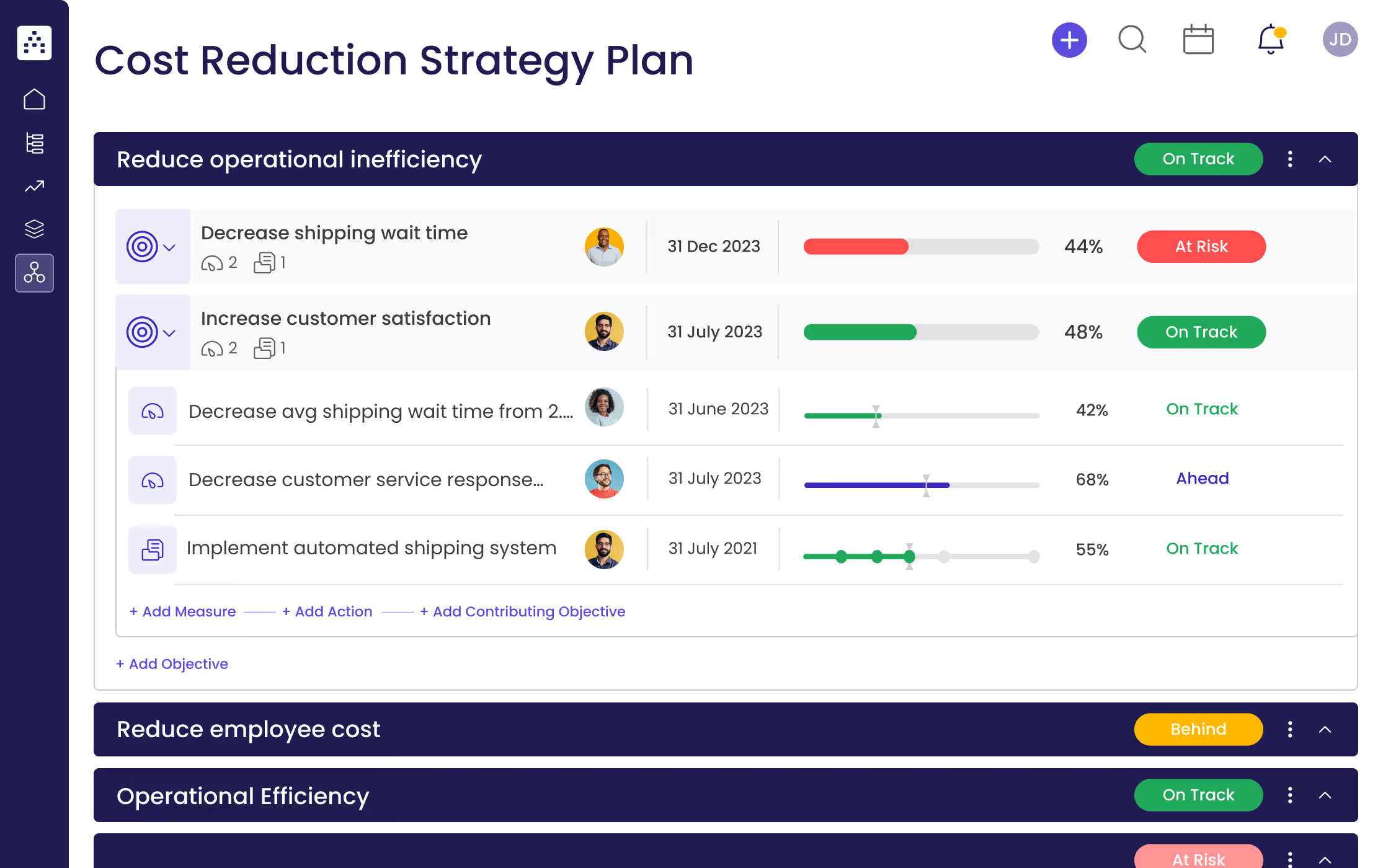What is a Cost Reduction Strategy Plan?
A Cost Reduction Strategy Plan is a systematic approach to identifying and reducing costs that is tailored to the specific needs of a business or organization. It can involve evaluating processes and practices, implementing new solutions, and changing the way resources are utilized. The goal of a cost reduction strategy plan is to maximize profits and minimize costs in order to achieve sustainable growth.
What's included in this Cost Reduction Strategy Plan template?
- 3 focus areas
- 6 objectives
- 6 projects
- 6 KPIs
Each focus area has its own objectives, projects, and KPIs to ensure that the strategy is comprehensive and effective.
Who is the Cost Reduction Strategy Plan template for?
This Cost Reduction Strategy Plan template is for teams of any size and industry that are looking to create a plan to reduce their costs. It is designed to provide a comprehensive yet straightforward structure for teams to build their plans, giving clear guidance on all of the necessary steps to creating an effective, actionable cost reduction strategy.
1. Define clear examples of your focus areas
The first step in creating a cost reduction strategy plan is to define your focus areas. A focus area is a general area of your business or organization that you want to improve in order to reduce costs. Examples of focus areas could include reducing operational inefficiencies, decreasing energy costs, or minimizing employee costs.
2. Think about the objectives that could fall under that focus area
Once you have identified your focus areas, you can start to think about the objectives that could fall under each one. Objectives are specific goals that you will aim to achieve in order to reduce costs. Objectives should be measurable, actionable, and achievable.
Examples of some objectives for the focus area of Reduce operational inefficiency could be: Decrease shipping wait time , and Increase customer satisfaction.
3. Set measurable targets (KPIs) to tackle the objective
Once you have identified your objectives, you will need to set measurable targets (KPIs) to tackle each objective. KPIs are quantitative measures that can be easily tracked and monitored to measure the success of each objective. Examples of KPIs could include reducing shipping wait time, increasing customer service response time, or decreasing overtime hours.
An example of a KPI for the focus area of Reduce operational inefficiency could be: Decrease avg shipping wait time from 2.2 days to 1.5 days .
4. Implement related projects to achieve the KPIs
Once you have identified your KPIs, you will need to implement related projects to achieve them. Projects (or actions) are the steps that you will take to reach the set targets. Examples of projects could include implementing an automated shipping system, increasing staff productivity, or upgrading to more efficient lighting.
5. Utilize Cascade Strategy Execution Platform to see faster results from your strategy
The Cascade Strategy Execution Platform can help you to implement, track, and monitor your cost reduction strategy. It can provide comprehensive insights into the progress of your plan, allowing you to quickly identify any areas that require further action or improvement.


